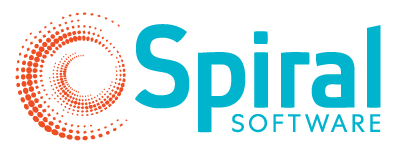
INSPIRING PROGRESS, EMPOWERING LIVES: INTEGRATING RESEARCH AND CLINICAL EXPERTISE THROUGH TAME AND TTM2

THE TAME TRIAL
The TAME trial is a phase III, multi-centre, randomised, parallel-group, clinical trial in resuscitated cardiac arrest patients admitted to the intensive care unit to determine whether targeted therapeutic mild hypercapnia (TTMH) improves neurological outcome at 6 months compared to standard care (targeted normocapnia) (TN).
REPORT
Primary Outcome: As a novel trial conjoined with TTM2, the study aims to assess the beneficial and harmful effects of post-ischaemic hypothermia (33°C) when compared with normothermia and early treatment of fever (37.8°C) in unconscious adults after out-of-hospital cardiac arrest.
CASE STUDY
“In the pursuit of evidence to improve neurological and quality-of-life outcomes, we are obligated to continue to critically appraise our current interventions and to seek novel therapeutic interventions for cardiac arrest patients admitted to our ICUs”
GLENN EASTWOOD, PRINCIPAL INVESTIGATOR
RESULTS
In patients with coma who were resuscitated after out-of-hospital cardiac arrest, targeted mild hypercapnia did not lead to better neurologic outcomes at 6 months than targeted normocapnia.

BACKGROUND
For patients admitted to the ICU after a cardiac arrest, neurological injury leading to the withdrawal of life support or neurological impairment are the most common outcomes following cardiac arrest.
An out-of-hospital cardiac arrest has an estimated incidence of approximately 1 per 1,000 persons per year (approximately 25,000 individuals in Australia each year).
In studies using detailed instruments, cognitive impairment is reported to be present in 50% of survivors of cardiac arrest discharged from the hospital; this is associated with lower quality of life and increased caregiver strain.
For each resuscitated cardiac arrest patient admitted to ICU who survives to hospital discharge, admission costs alone exceed $120,000. Moreover, the estimated ongoing community-based costs for each patient with moderate cerebral injury is AUD$34,000/year.
Many interventions have been tested in order to lower mortality and improve neurologic function in patients resuscitated after out-of-hospital cardiac arrest. Despite promising results in experimental models, all but one have failed in clinical trials. To date, induced hypothermia is the only intervention that has shown promising results in preliminary clinical trials.
Australian mortality rates for heart attack range between 87-94%.
TRIAL DESIGN
TTM2 and TAME share many trials characteristics and collect similar data-points so our software was used for both studies.
An international, multi-centre, parallel-group, phase III, non-commercial, randomised, controlled trial (RCT) aiming to enrol 1700 patients.
Participants with out-of-hospital cardiac arrest will be randomised to targeted temperature management with hypothermia at 33°C, or normothermia and early treatment of fever equal to or greater than 37.8°C.
TRIAL RESULTS
A total of 1700 patients from 63 ICUs in 17 countries were recruited, with 847 patients assigned to targeted mild hypercapnia and 853 to targeted normocapnia.
A favourable neurologic outcome at 6 months occurred in 332 of 764 patients (43.5%) in the mild hypercapnia group and in 350 of 784 (44.6%) in the normocapnia group (relative risk, 0.98; 95% confidence interval [CI], 0.87 to 1.11; P=0.76).
In patients with coma who were resuscitated after out-of-hospital cardiac arrest, targeted mild hypercapnia did not lead to better neurologic outcomes at 6 months than targeted normocapnia.
Death within 6 months after randomization occurred in 393 of 816 patients (48.2%) in the mild hypercapnia group and in 382 of 832 (45.9%) in the normocapnia group (relative risk, 1.05; 95% CI, 0.94 to 1.16). The incidence of adverse events did not differ significantly between groups.
KEY CONNECTIONS
Chief Investigator: Associate Professor Glenn Eastwood, Department of Intensive Care, Austin Hospital, 145 Studley Road, Heidelberg, Victoria 3084, Australia. Phone: +61 3 9496 4835 Fax: +61 3 9496 3932 Email: glenn.eastwood@austin.org.au
Trial Manager, Bridget Ady. Project Manager, The ANZIC Research Centre, Monash University.
EDC Platform Project Manager, Jess Wren. Project Manager, Spiral.
Endorsement: Australian and New Zealand Intensive Care Society Clinical Trials Group (ANZICS-CTG) and the Irish Critical Care – Clinical Trials Group (ICC-CTG)
Coordinating centre: The ANZIC-RC, School of Public Health and Preventative Medicine, Monash University
Twitter: Follow news and updates from the TAME trial page on Twitter – https://twitter.com/TAMEtrial
-

Our Spiral Project Lead and EDC Platform manager for the TAME trial is Jess Wren.
In charge of overseeing software development that’s used in clinical trials, Jess not only engages clients but, like glue, she also pulls the team together along the path of delivery.
-

“You hear of working in an agile environment but this really is as agile as it gets.”

